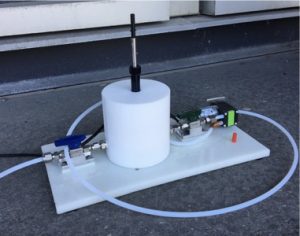New research that I was involved in has been published recently — here are the articles that are now available
Y. Nazarenko, R.B. Rangel-Alvarado, G. Kos, U. Kurien, P.A. Ariya, Novel Aerosol Analysis Approach for Characterization of Nanoparticulate Matter in Snow, Environmental Science and Pollution Research (2016), doi: 10.1007/s11356-016-8199-3
This work is a reanalysis of snow samples that I have collected during my Arctic field trips with a focus on nanoparticles.
P. Kovalsky, G. Kos, K. Nährer, C. Schwab, T. Jenkins, G. Schatzmayr, M. Sulyok, R. Krska, Co-occurrence of Regulated, Masked and Emerging Mycotoxins and Secondary Metabolites in Finished Feed and Maize – an Extensive Survey, Toxins 8 (2016), 363, doi: 10.3390/toxins8120363
The manuscript provides an extensive and detailed statistical analysis of 1900+ finished feed, maize and maize silage samples from 40+ countries. 50+ fungal toxins and secondary metabolites were determined and evaluated with a focus on co-occurrence and correlation of concentrations. The analysis was performed using Matlab and R.
G. Kos, M. Sieger, D. McMullin, C. Zahradnik, T. Öner, B. Mizaikoff, R. Krska, A Novel Chemometric Classification for FTIR Spectra of Mycotoxin-contaminated Maize and Peanuts at Regulatory Limits, Food Additives and Contaminants, Part A 33 (2016), 1596-1607, doi: 10.1080/19440049.2016.1217567
As a collaborator on the EU funded Mycospec project, I have modelled mycotoxin contamination levels from mid-infrared data. Focus was the implementation of non-parametric machine learning algorithms such as bagged decision trees and a comparison with standard (and generally accepted) principal component analysis results. The analysis was performed using Matlab.
